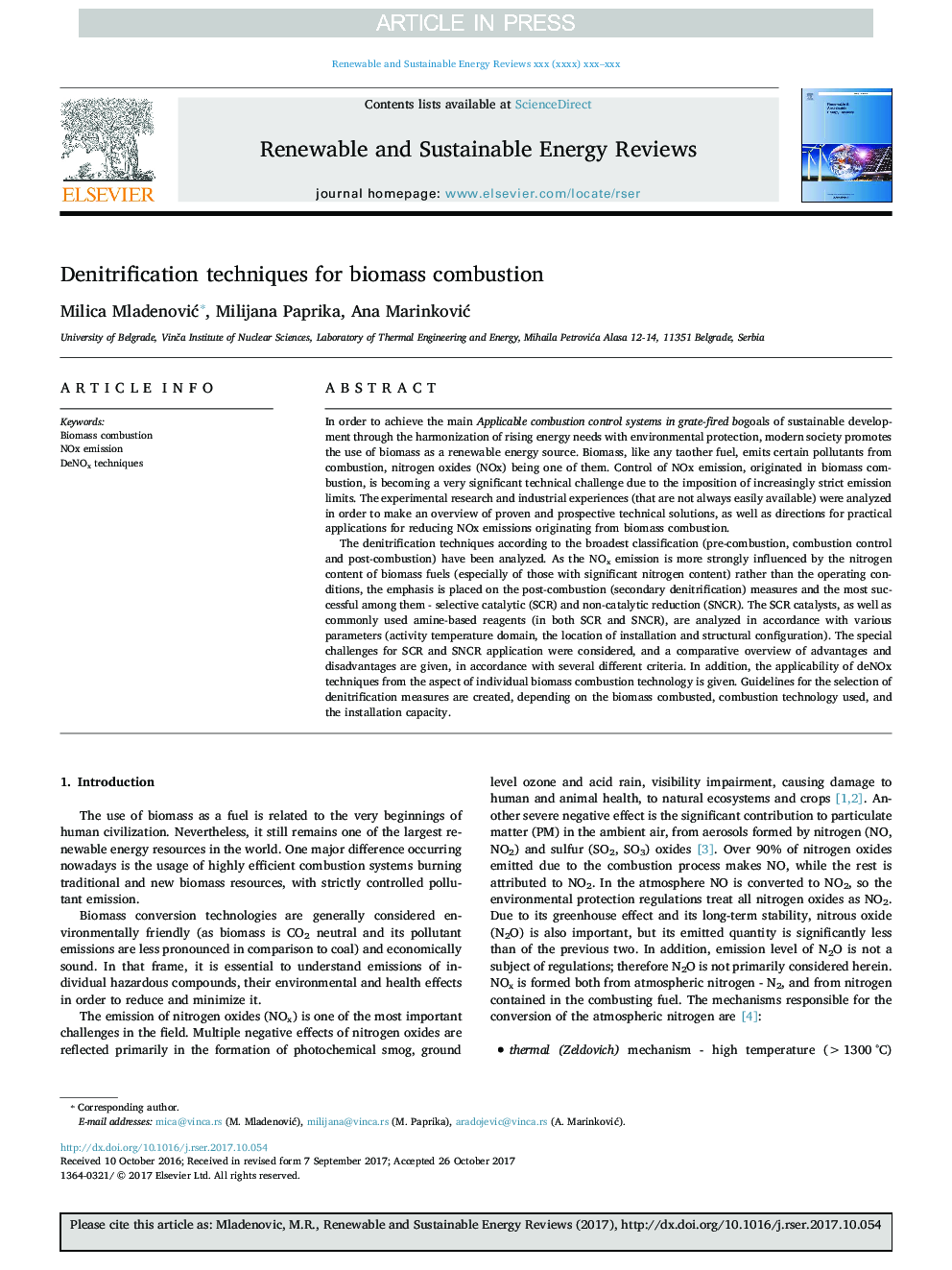| Article ID | Journal | Published Year | Pages | File Type |
|---|---|---|---|---|
| 8112090 | Renewable and Sustainable Energy Reviews | 2018 | 15 Pages |
Abstract
The denitrification techniques according to the broadest classification (pre-combustion, combustion control and post-combustion) have been analyzed. As the NOx emission is more strongly influenced by the nitrogen content of biomass fuels (especially of those with significant nitrogen content) rather than the operating conditions, the emphasis is placed on the post-combustion (secondary denitrification) measures and the most successful among them - selective catalytic (SCR) and non-catalytic reduction (SNCR). The SCR catalysts, as well as commonly used amine-based reagents (in both SCR and SNCR), are analyzed in accordance with various parameters (activity temperature domain, the location of installation and structural configuration). The special challenges for SCR and SNCR application were considered, and a comparative overview of advantages and disadvantages are given, in accordance with several different criteria. In addition, the applicability of deNOx techniques from the aspect of individual biomass combustion technology is given. Guidelines for the selection of denitrification measures are created, depending on the biomass combusted, combustion technology used, and the installation capacity.
Keywords
Related Topics
Physical Sciences and Engineering
Energy
Renewable Energy, Sustainability and the Environment
Authors
Milica MladenoviÄ, Milijana Paprika, Ana MarinkoviÄ,
